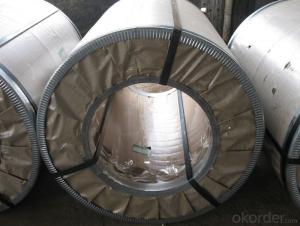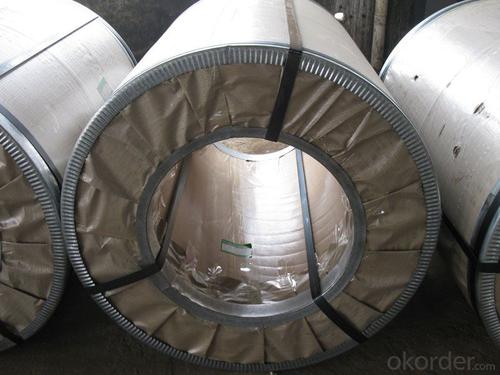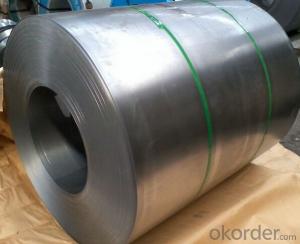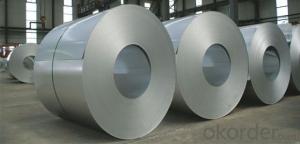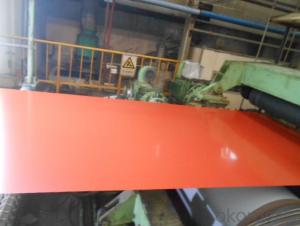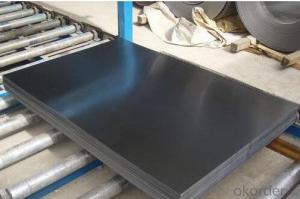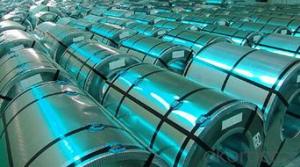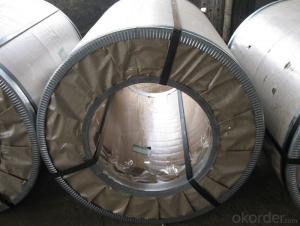Cold Rolled Steel Coil--Best Quality in China
- Loading Port:
- China main port
- Payment Terms:
- TT OR LC
- Min Order Qty:
- 50 m.t.
- Supply Capability:
- 10000 m.t./month
OKorder Service Pledge
OKorder Financial Service
You Might Also Like
Cold Rolled Steel Coil--Best Quality in China
1.Structure of Cold Rolled Steel Description:
The raw material of cold rolled steel coil/sheet is high quality hot rolled product, and after pickling continuous rolling, degreasing, annealing,skin pass,slitting and cut to length line etc. Along with it many kinds of new technology and new process of global cold rolling production have been applied. Therefore the quality of the goods could be guaranteed. The product is widely used in outdoor and interior decoration, furnishing manufacturing, home appliance, automobile etc.
2.Main Features of the Cold Rolled Steel:
• Excellent process capability
• Smooth and flat surface
• Workability, durability
• Excellent heat resistance performance
• High strength
• Good formability
• Good visual effect
3. Cold Rolled Steel Images
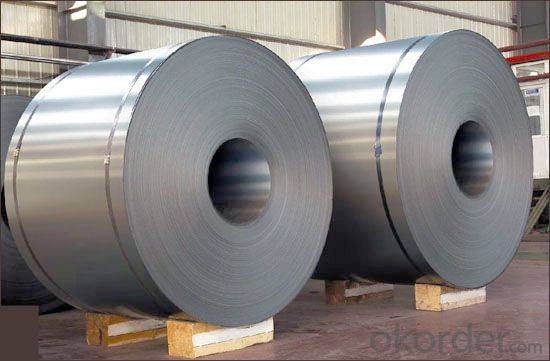
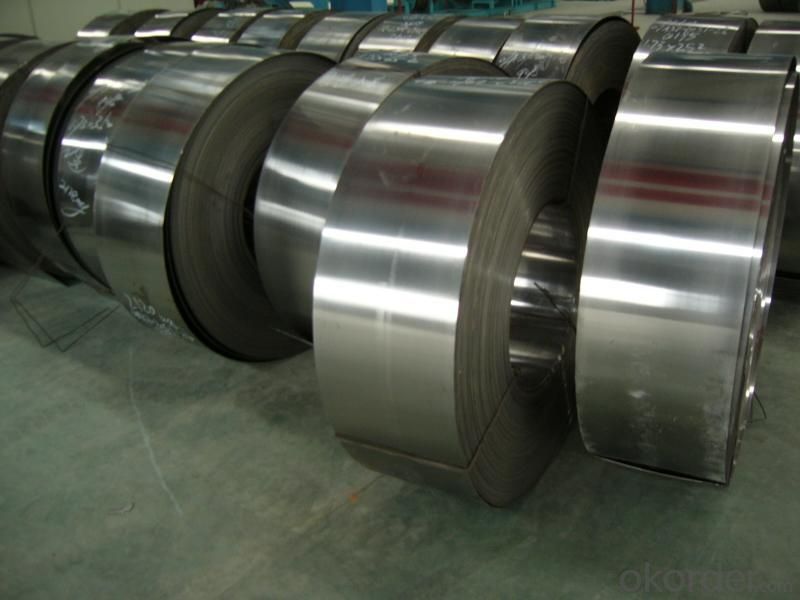
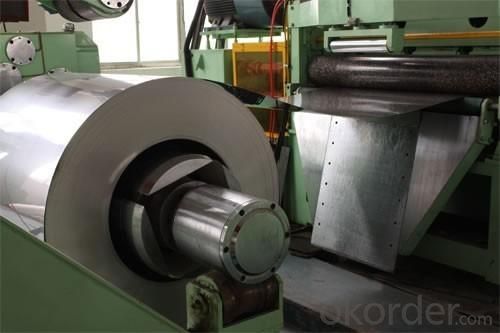
4.Cold Rolled Steel Specification
Standard:AISI,ASTM,DIN,GB,JIS,JIS G3302 ASTM 653M EN10142
Grade: Q195~Q345
Thickness: 0.16mm~2.0mm
Width: 1250mm MAX
Coil weight:3-12 MT
Coil ID:508/610mm
Chemical composition:
C | Si | Mn | Cr | Ni | P | S |
0.150 | 0.476 | 11.231 | 12.50 | 0.900 | 0.039 | 0.010
|
5. FAQ of Cold Rolled Steel
1.How to guarantee the quality of the products?
We have established the international advanced quality management system,every link from raw material to final product we have strict quality test;We resolutely put an end to unqualified products flowing into the market. At the same time, we will provide necessary follow-up service assurance.
2. How long can we receive the product after purchase?
Usually within thirty working days after receiving buyer’s advance payment or LC. We will arrange the factory manufacturing as soon as possible. The cargo readiness usually takes 15-25 days, but the shipment will depend on the vessel situation.
- Q: Can steel coils be used in the production of medical equipment?
- Yes, steel coils can be used in the production of medical equipment. Steel is a versatile material known for its strength, durability, and ability to withstand various environmental conditions. It is commonly used in the manufacturing of medical equipment such as surgical instruments, orthopedic implants, hospital beds, and diagnostic machines. Steel coils are often utilized as a raw material in the production process. They can be processed and formed into various shapes, sizes, and components required for medical equipment. The coils can be cut, shaped, and welded to create intricate parts with precise specifications, ensuring the quality and performance of the final product. Moreover, steel coils can be surface-treated to enhance their corrosion resistance, making them suitable for use in medical environments where cleanliness and hygiene are crucial. Coatings such as electroplating or powder coating can be applied to provide an additional layer of protection against rust and other forms of degradation. Furthermore, steel is a cost-effective material, which makes it an attractive choice for medical equipment manufacturers. Its availability and affordability make it a preferred option for producing high-quality medical devices while keeping the production costs manageable. In summary, steel coils can indeed be used in the production of medical equipment. Their strength, durability, versatility, and cost-effectiveness make them an ideal choice for manufacturing various components and instruments used in the healthcare industry.
- Q: How are steel coils used in the production of steel wire?
- Steel coils are used in the production of steel wire by being unwound and fed into a wire drawing machine. The coils provide a continuous and consistent supply of steel, which is passed through a series of dies to reduce its diameter and increase its strength. This process is repeated multiple times until the desired wire diameter is achieved.
- Q: What temp does fire have to be to melt steel?
- more than 300° F
- Q: What is the minimum order quantity for steel coils?
- The minimum order quantity for steel coils can vary depending on the supplier and specific product requirements. It is best to consult with the supplier or manufacturer directly to determine their minimum order quantity.
- Q: How are steel coils used in the production of electrical devices?
- Steel coils are an essential component in the production of electrical devices. These coils are typically made from high-quality steel that is precisely wound into a circular shape. They play a crucial role in the functioning of various electrical devices, such as transformers, motors, generators, and inductors. One primary use of steel coils is in transformers. Transformers are vital for stepping up or stepping down voltage levels in electrical circuits. They consist of two separate coils, known as the primary and secondary coils, which are wound around a magnetic core. The steel coil provides stability and support to the windings, ensuring proper alignment and preventing any deformation. Additionally, the high magnetic permeability of steel helps to enhance the efficiency of energy transfer between the coils. In motors and generators, steel coils are employed to create magnetic fields that generate mechanical energy or convert it into electrical energy. The coils are wound around an armature or rotor, which rotates within a magnetic field created by a stator. As the current flows through the coils, a magnetic field is produced, resulting in the rotation of the armature or the generation of electrical power. Inductors, another type of electrical device, also utilize steel coils. An inductor is essentially a coil of wire wound around a core material, often made of steel. Steel coils in inductors help to increase the inductance, which is a measure of the device's ability to store energy in a magnetic field. By storing energy in this manner, inductors can regulate currents, filter out noise, and provide stability to electrical circuits. Overall, steel coils play a vital role in the production of electrical devices by providing stability, support, and enhancing the magnetic properties necessary for their efficient functioning. Without steel coils, the performance and reliability of electrical devices, such as transformers, motors, generators, and inductors, would be significantly compromised.
- Q: My 8-year-old and 9-year-old boys have approached me with an interesting question. Does fire burn steel? One says yes, the other says no. Help me to settle yet another debate :)
- no, fire MIGHT cause steel to oxidize, depending on the alloy, but think of steel as a block of ice. Steel melts at 2800 degrees F and boils and evaporates at 5400 degrees. Some metals like magnesium can possibly catch fire but not steel
- Q: How are steel coils coated to prevent corrosion?
- Steel coils are often coated to prevent corrosion through a process called galvanization. This involves applying a layer of zinc to the surface of the steel coils, which acts as a protective barrier against moisture and other environmental elements. The zinc coating effectively prevents rust and corrosion from forming on the steel surface, extending the lifespan of the coils.
- Q: What are the different methods of coil end welding for steel coils?
- There are several different methods of coil end welding for steel coils, which include resistance welding, laser welding, and electric arc welding.
- Q: What are the different types of steel grades used for coil production?
- There are various types of steel grades used for coil production, including carbon steel, stainless steel, high-strength low-alloy (HSLA) steel, and advanced high-strength steel (AHSS). Each grade has its own unique properties and is chosen based on the specific requirements of the application.
- Q: What are the dimensions of steel coils used in the packaging industry?
- The dimensions of steel coils utilized in the packaging industry are subject to variation in accordance with the specific application and requirements. However, the customary dimensions for steel coils employed in packaging encompass a thickness ranging from 0.15 mm to 3 mm and a width spanning from 600 mm to 2000 mm. The internal diameter of the coil, referred to as the core, generally measures around 508 mm (20 inches); however, alternative sizes such as 610 mm (24 inches) or 762 mm (30 inches) may also be utilized. The outer diameter of the coil may fluctuate contingent upon the weight and size of the coil, yet it commonly falls between 1000 mm and 2000 mm. It is crucial to emphasize that these dimensions can be tailored to accommodate the specific requirements and preferences of the packaging industry.
Send your message to us
Cold Rolled Steel Coil--Best Quality in China
- Loading Port:
- China main port
- Payment Terms:
- TT OR LC
- Min Order Qty:
- 50 m.t.
- Supply Capability:
- 10000 m.t./month
OKorder Service Pledge
OKorder Financial Service
Similar products
Hot products
Hot Searches
Related keywords
